Hear me out but… Ghostbusters 2 makes far more sense if everyone is dead
Here's why you're misunderstanding Ghostbuster 2
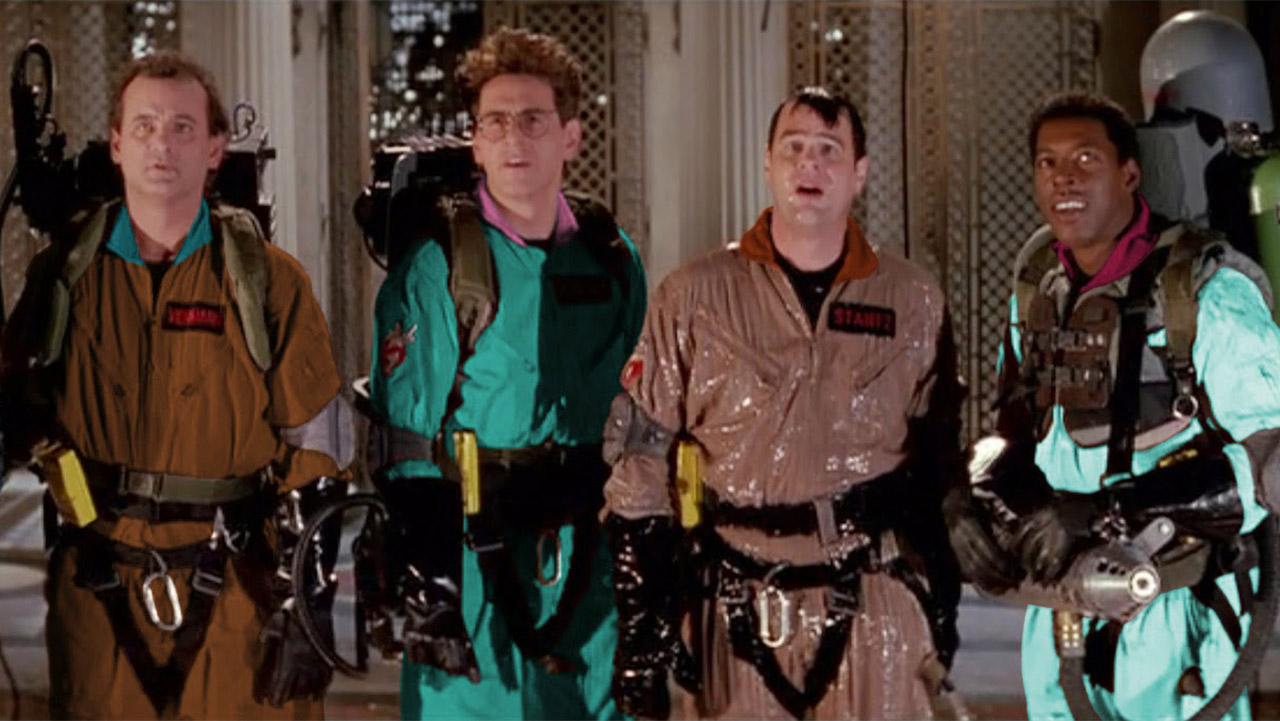
A thing you need to understand before we go on: I like Ghostbusters to a troubling degree. I have ever since I first watched the original film when I was about 9. I didn’t get half the jokes at the time, mind. Heck, I’m not sure whether I was even entirely clear that it was a comedy. But that’s fine. Because it meant that, over the ensuing years, Ghostbusters grew up with me rather than being left behind like so many other childhood fandoms. I have been all-in on Ghostbusters for almost my entire life. I still instinctively remember the ambient, incidental music from the Real Ghostbusters cartoon like the resonant voice of a loved one. The unique, indignant whine of ECTO-1’s siren gives me a specific tingly feeling no other sound can muster, somehow cutting through to my very core and commanding my full attention in an instant, the way that I imagine a whistle does to a well-trained sheepdog.
So keep that preface in mind when I say this, and understand that I say it with love. But, wouldn’t Ghostbusters 2 make a lot more sense if everyone was dead?
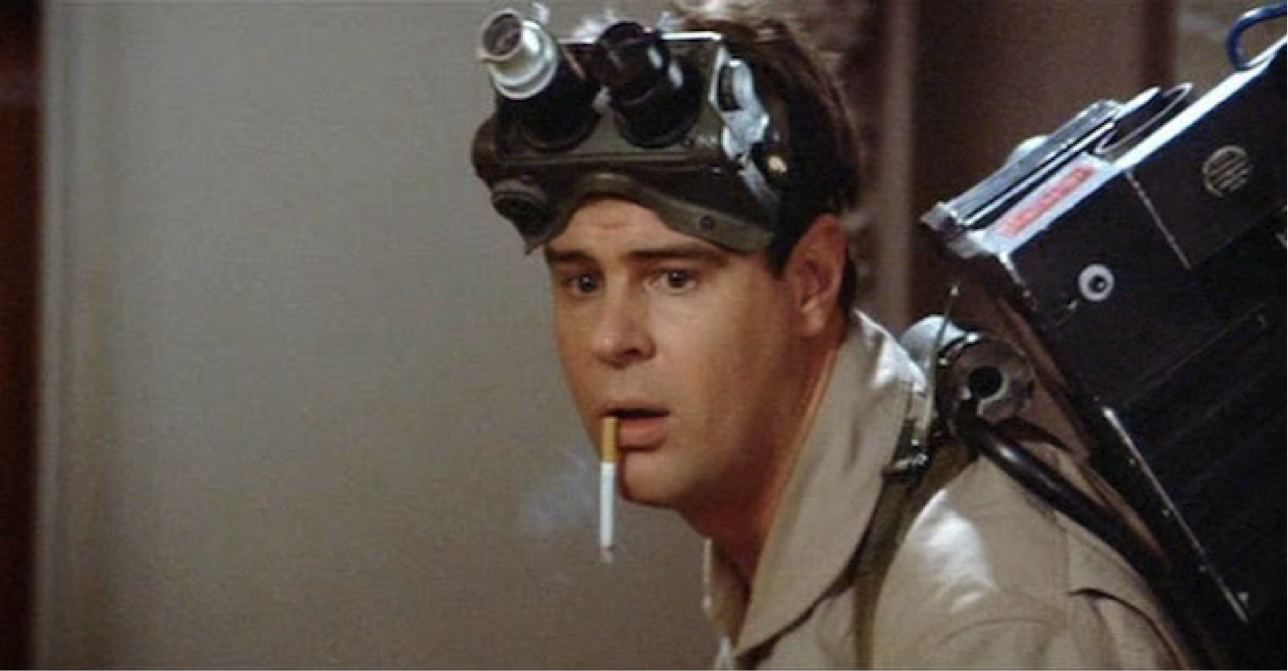
Because really, the longer I’ve thought about it, the more that notion has come to clear up a whole lot of the film’s problems. I do, unsurprisingly, love Ghostbusters 2, but it is a movie with issues. The main one is that it repeats the plot structure of the first film beat-for-beat, end-to-end, as if the writing and directing team of Ackroyd, Ramis, and Reitman simply pulled up the original 1984 architectural blueprint and taped variant versions of its key scenes over all the major story points.
Both times, the Ghostbusters start off as down-and-out, disrespected nobodies. They notice the first stirrings of a potentially major paranormal problem, but no-one believes them. They get into trouble for believing in ghosts (thrown out of university in the first film, arrested in the second) and all seems lost. A very public, medium-difficulty bust (the original Sedgewick Hotel battle with Slimer, vs. the courtroom fight against the Scoleri brothers) saves their reputation at the last minute. Their hero status is confirmed by a cool and quirky montage sequence.
They set about further investigating the bigger threat, as Peter tries to woo a sceptical Dana, and they discover an ancient evil attempting to engineer a return by manipulating humans to do its bidding (Gozer using Louis and Dana in Ghostbusters, Vigo using Janosz and Dana in Ghostbusters 2). Things culminate in an assault on a large building (Spook Central in the original movie, the museum in the sequel), while a cheering crowd looks on and a skyscraper-sized character makes an appearance (Ghostbusters has Mr. Stay Puft, Ghostbusters 2 has the Statue of Liberty). Day saved, Peter and Dana are together (again), and everyone loves the Ghostbusters (again).
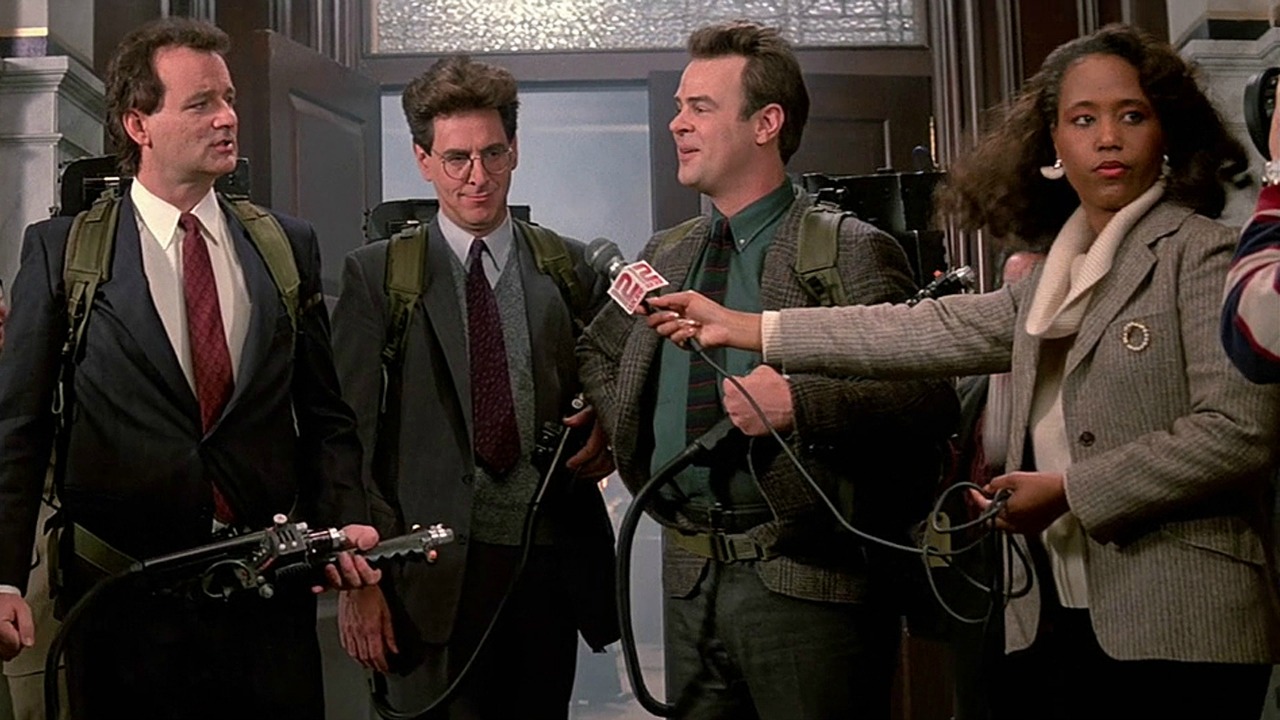
None of this is a deal-breaking problem in itself (after all, a good story is a good story, and the real joy of Ghostbusters has always come from its zingy dialogue and warmly off-kilter character interactions rather than a progressive approach to plotting). But things do become rather less stable when taking the two films together as whole. The Ghostbusters’ reverted pariah status in the sequel makes very little sense given that they clearly saved the entire world just a few years earlier, with resounding and unambiguous scale and spectacle.
Ditto the fact that no-one believes in ghosts any more, the world uniformly seeing the Ghostbusters as cranks, not long after the entirety of New York was beset by a bona fide supernatural siege covering every street and subway. Anyone with the budget, technology, and logistical reach to fake all of that (and the ensuing evidence, by way of TV coverage) would hardly need to pull a stunt for money and publicity, as the second movie’s ubiquitous accusers unconvincingly state the Ghostbusters have.
Sign up for the Total Film Newsletter
Bringing all the latest movie news, features, and reviews to your inbox
So while the idea that the Ghostbusters are actually dead in the second movie has floated around as a minor, vaguely mused-upon fan theory for a while, having recently plumbed into the possibilities, I’ve discovered that it actually fixes a lot of things. In fact, its fixings start with the very end of the first movie.
Because we need to briefly talk about that explosion. The one that comes from the legendary, climactic crossing of the streams. Because if you listen to the director’s commentary on the Ghostbusters DVD, it’s explained that the sheer size of that roof-engulfing mini-nuke was intended as a joke. The joke was that the detonation was so big that no-one up there could have survived it, yet there the gang all are, no worse off than dazed, confused, and uncomfortably goopy. Alas, it’s the only joke in the film that doesn’t land. Within a movie defined by witty, wry dialogue and pithy, uniquely voiced responses to incredulous situations, a half-clear slapstick parody of action-movie excess just doesn’t fit the tone, and the blast ends up being one of those Weird Things You Just Have To Ignore.
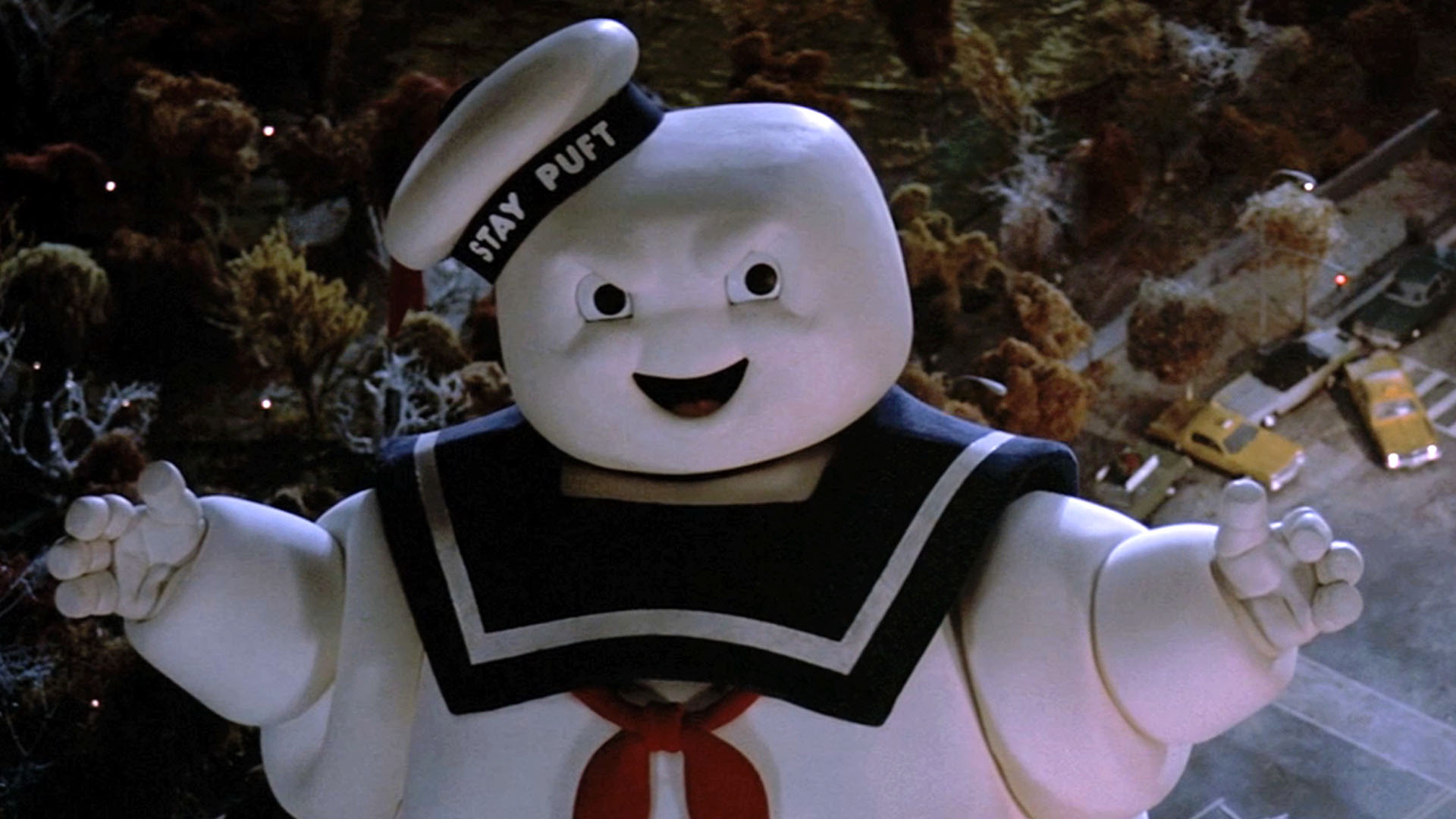
But what if it wasn’t? What is the explosion was so inescapably large that no-one actually escaped it? What if everyone died, and the second movie really depicts the cast unknowingly trapped in a limbo of their own making, a realm in which they are doomed to repeat the past in order to overcome previous traumas and mistakes, so that they might move on?
That would certainly explain the repetition of the plot, and the otherwise implausible reset of the Ghostbusters’ social status. And it also explains much on a character-by-character basis too. Because each of the main cast, to some degree or other, is working through their demons, with some manner of symbolism present throughout the sequel in regard to their previous journeys and mistakes.
Ray is the most obvious example. A nerdy, excitable, bookish academic, he’s haunted by the knowledge that when it came time to step away from the theory and take action, he failed, making a crucial tactical error in the field and summoning the Stay Puft Marshmallow Man. Thus, in Ghostbusters 2, we see him take refuge in a book store, expressing his interest in the paranormal only through academia, and spending his days sourcing material for others to use. Fast-forward to the end of the film, and we see Ray overcoming his past in the most explicit way possible, summoning (and controlling) another gigantic, street-stomping entity, but this time as a force for good, the Statue of Liberty’s supernatural animation coming as a direct result of Ray’s research into harnessing the mood slime.
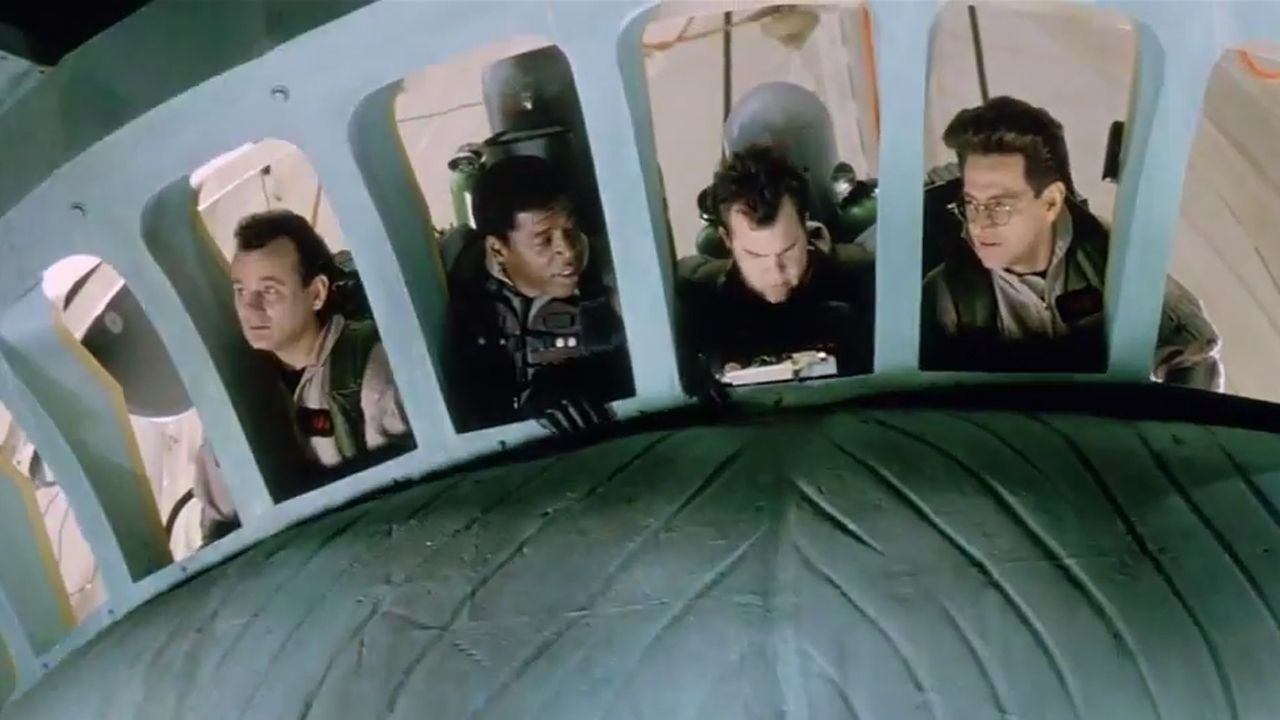
The rest of Peter and Dana’s relationship can be seen on similar terms. Although he does enough to attract her affections by the end of the first movie, we never see any sign that Venkman has really grown as a person, at least not to the degree of becoming a man capable of a real, adult partnership. Peter’s world view still feels largely about Peter. As Dana states at one point, he’s more like a gameshow host than a scientist, and at the start of Ghostbusters 2, he’s not far off literally being that, presenting a schlocky paranormal chat show which, like most things Venkman, is more of a forum for his own attention-baiting snark and put-down wit than for anyone else involved.
But over the course of Ghostbusters 2, he does move forward. He never leaves behind the one-liners, of course, but his growing affection for Dana’s son, Oscar, finally exhibits a Peter Venkman caring for someone who can’t give him anything back. Someone, in fact, who as the son of another man, he has no immediately personal investment in. Someone who should remind him of everything he’s lost. But by the end we see a warmer, softer Peter fully committed – and seemingly equipped – to step up to being a family man.
The most esoteric and apparently least emotional character, Egon’s personal issues are less pronounced, but there’s still a case for him having things to work through. He seems quite happy to be back in the psychology lab, of course, but at this point we should pay attention to the fact that he’s doing in-depth research on the effect of rather simplistic positive and negative emotional stimulus (by giving a child a puppy and then taking it away), something that most people understand instinctively, but which the somewhat detached Spengler perhaps doesn’t.
Filter this activity through his awkward, non-starting relationship with a besotted Janine in the first film, and there’s perhaps a hint of what Egon knows he still needs to work on. Given that the core plot device of Ghostbusters 2 revolves around the discovery of an emotionally resonant ectoplasm capable of amplifying human emotion – something Egon is eventually fundamental in understanding and manipulating – and you’ve got an interesting arc of metaphorical behaviour here too. One, in fact, that ends with him getting to see Janine happy with Louis, a big-hearted nerd who can give her the open devotion that Egon himself still can’t.
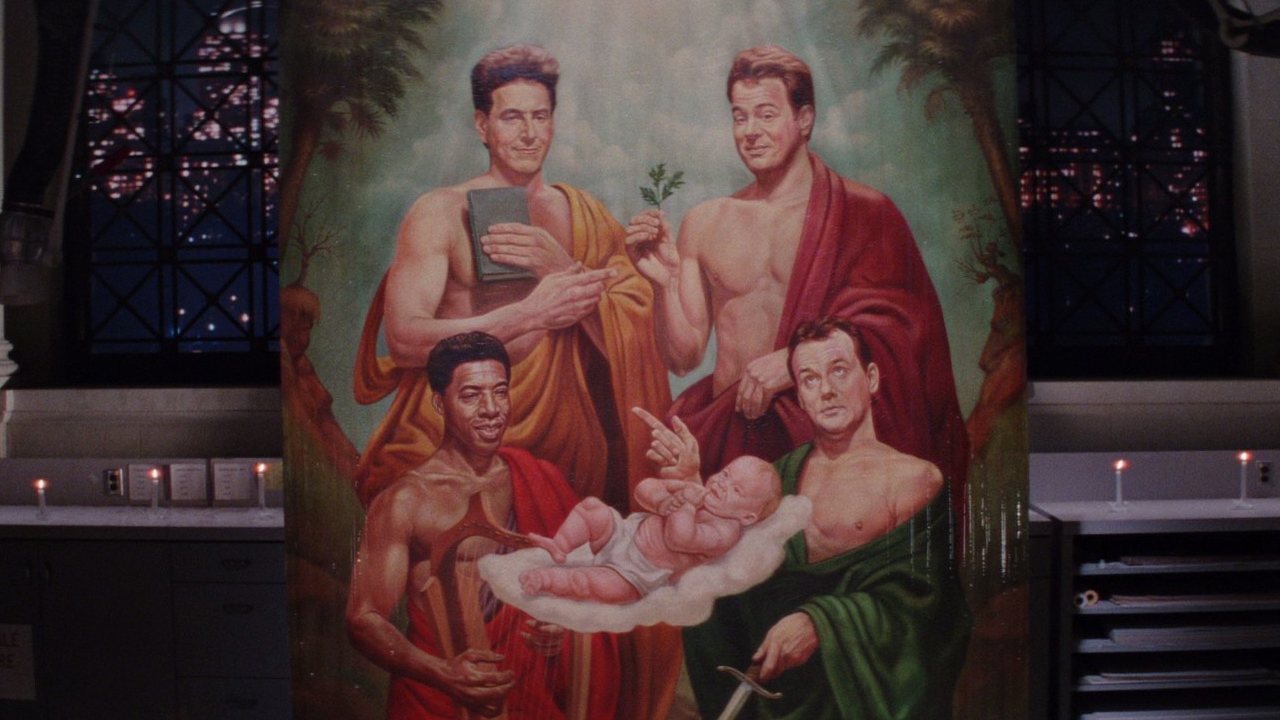
And that’s a neat ‘two birds, one stone’ scenario that also lets the similarly dead Louis deal with his previous feelings of inadequacy and unattainable acceptance. After once being the guy who had to pass off business clients as friends (in order to fill a party he himself was eventually locked out of), he eventually manages to get the girl and become a Ghostbusting hero in his own right – at least in his own mind.
Winston, admittedly, is a trickier case to make, given that he has such a minor role in both films – Ernie Hudson infamously signed up for a much bigger part, before the first film’s script was heavily hacked down on the way to filming. Though you could argue – so I will – that perhaps Winston has been dealing with personal conflict stemming from having pledged to believe in anything in exchange for a steady pay cheque at his Ghostbusters job interview, despite an implied Christian background. For all the good he’s done, maybe Winston’s world-view is a tad shaken, and so he needs a do-over in order to properly process things. Take all this into account, and his depiction at the end of Ghostbusters 2 (as part of an otherwise inexplicable religious-themed painting, alongside the rest of the team), can be seen as a kind of reconciliation.
In fact, given that we’re talking about an afterlife-set plot here, maybe the appearance of that mysterious, Heavenly artwork is the final sign that everyone finally has overcome their past hang-ups, and is now ready to move on. Hey, the whole climactic win in Ghostbusters 2 is eventually clinched by a cheery crowd singing Auld Lang Syne, and if there’s any more blatant subtextual hint of closure and personal progress than that, then… Well, there just isn’t.
See? Bulletproof.
Hear me out is GR's regular exploration, extrapolation, and expansion on the biggest and best movie fan theories and alternative takes around. From whole new interpretations, to critical angles you hadn't thought of, it's your home for the weirder side of film. Looking for more? Check out last week’s case for why the Matrix sequels are actually genius (if you imagine there is no real world).



